The difference between Arabica and Robusta Coffee varieties which is better than the harm of Robusta beans
Professional coffee knowledge exchange more coffee bean information please follow the coffee workshop (Wechat official account cafe_style)
For more boutique coffee beans, please add private Qianjie coffee on Wechat. WeChat account: qjcoffeex
Arabica: accounts for 65% of the global coffee production, basically what you drink better outside belongs to Arabica.
Robusta: it tastes strong, it's more exciting, and it's mostly used for instant coffee.
The three native species are Arabica, Robusta and Liberika (Liberika). Arabica ranks first in production, accounting for about 70,75% of the world's coffee production. There are bourbon, Tibica and other sub-varieties. Robusta accounts for about 2025% of the world's total coffee production. Liberian cards account for only 3% of the total and are mostly grown in the Asia-Pacific region.
First of all, let's use a chart to analyze the difference between Arabica and Robusta.
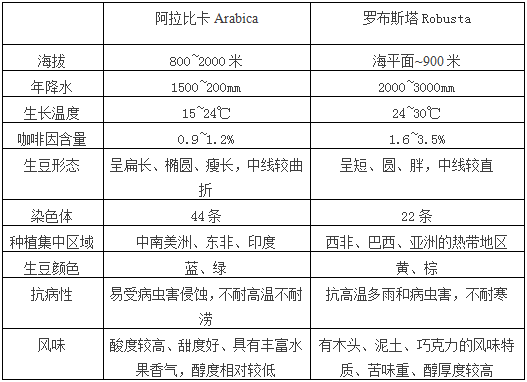
As can be seen from the following three pictures, the raw beans of high-quality washed Robusta (figure 1) are yellowish brown and grow short, round and fat compared with Arabikayega (figure 2). The color of Yega's raw beans looks more elegant and thinner, and the color is beautiful turquoise. Figure 3 shows Robusta's ripe beans. The roasted beans look more chubby.
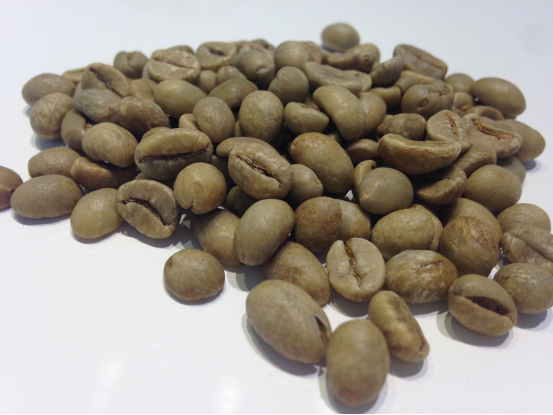
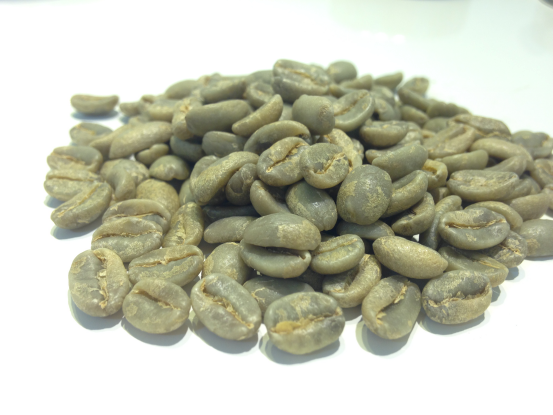
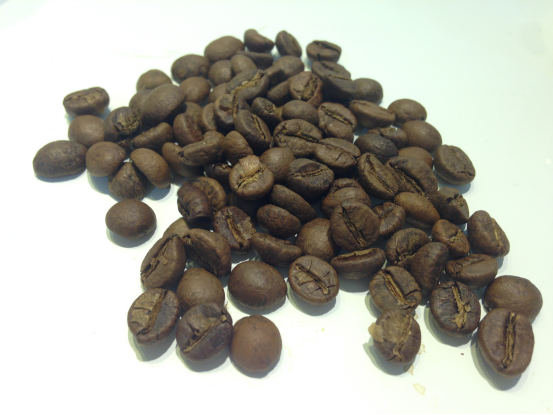
The Royal washing Robusta pictured above is grown in high-altitude areas of Indonesia and India. It is worth mentioning that in recent years, a small number of countries (such as Indonesia, India and other regions) have devoted themselves to improving the quality of Robusta coffee. They have planted Robusta at high elevations and carefully planted them in order to obtain high-quality raw coffee beans. At the same time, the use of water washing treatment can remove the miscellaneous smell of Luodou as much as possible to a certain extent and make the taste cleaner. Even the relatively high-quality, finely processed Robusta flavor still can not make up for the lack of its innate flavor. Made by hand, it will show obvious mugi-cha, peanut flavor, Xuanmi tea characteristics, bitter taste and no sour taste. Generally speaking, as an experience in the lecture, we will make Luodou for the students to taste.
The following picture shows a comparison between Arabica and Robusta leaves. The leaves of the former are slender and oval, while those of the latter are wider and thicker. The difference in leaf size is already obvious, not to mention the size of the plant. Arabica coffee trees are usually 2-3 meters high, while Robusta can reach more than 10 meters.

However, the value of Robusta is not limited to serving as a negative example to set off Arabica's nobility, but also has an unshakable position in Italian matching beans. Italian matching schools are divided into southern Italy and northern Italy. The baking degree of northern Italy is lighter than that of southern Italy and is made of 100% Arabica beans. On the other hand, Nanyi, which is deeply roasted and pursues a thick taste, will add a small amount of Robusta to the mix to increase the alcohol thickness of the coffee and produce a more fat-rich Espresso. Southern Italian style Espresso and milk blend show a mellow and full-bodied taste, milk coffee because of Robusta and Arabica complement each other, become more mellow. Robusta made up for the mellow aroma of Arabica, and Arabica enhanced its aroma, and matching was sublimated into an art at this time.
Robusta has also made some contributions to the research and development of new varieties of coffee. Although Arabica is rich in aroma and delicate and changeable taste, it is not resistant to drought and waterlogging, its disease resistance is weak, and its yield is lower than that of Robusta. In order to improve the disease resistance and yield of a variety, Arabica and Robsta will be crossed first and then backcrossed, and genes will be selected to pursue new varieties with high quality flavor, strong disease resistance and high yield.
Important Notice :
前街咖啡 FrontStreet Coffee has moved to new addredd:
FrontStreet Coffee Address: 315,Donghua East Road,GuangZhou
Tel:020 38364473
- Prev
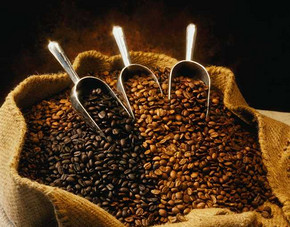
What's the difference between Arabica and Robusta coffee?
Following Cafe (Wechat official account vdailycom) found that Coffea Arabica and Coffea Robusta are two different coffee varieties, which now account for the vast majority of coffee bean production in the world. There are three types of Arabica coffee and Robusta coffee
- Next
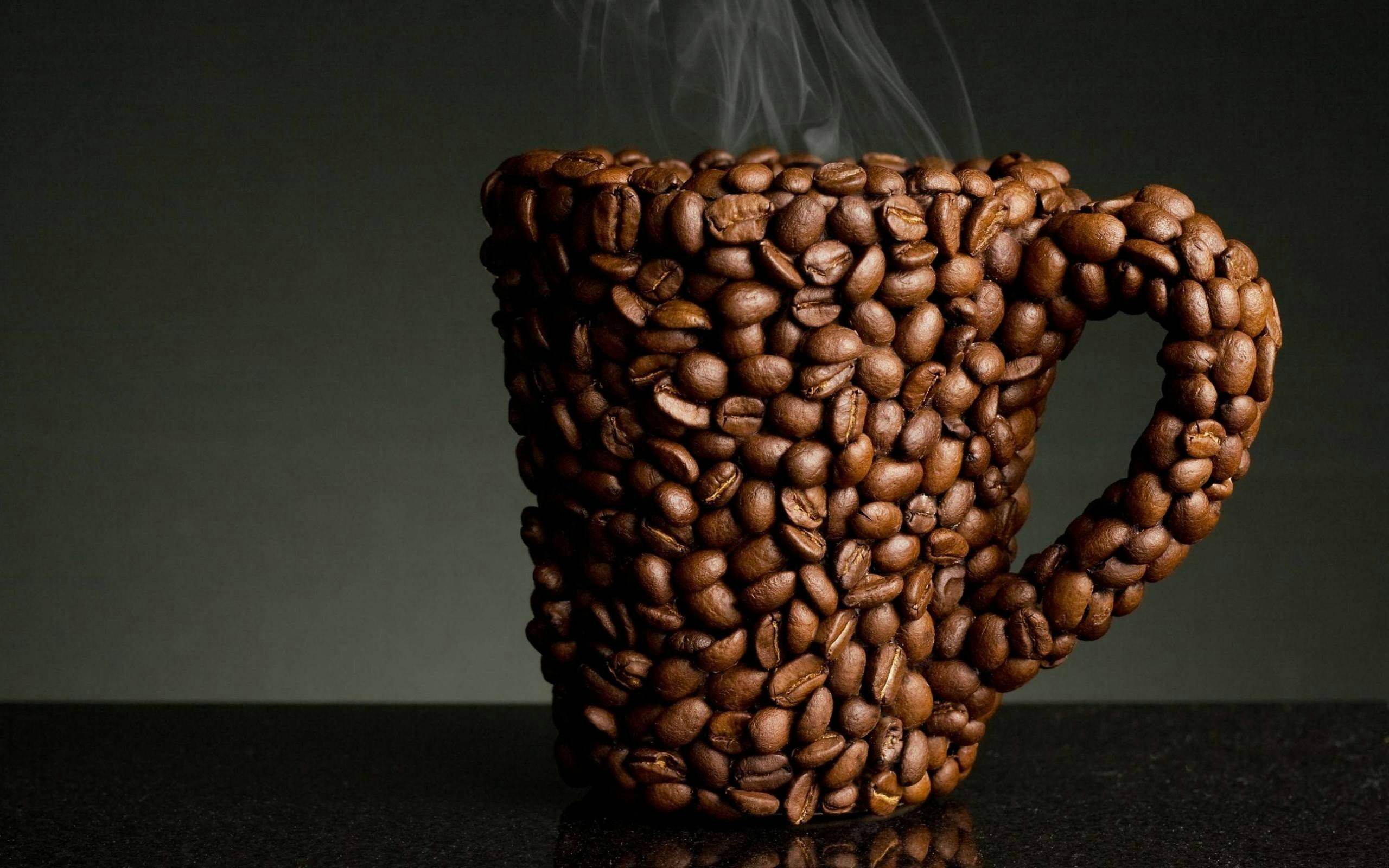
What are the differences between Arabica and Robusta coffee varieties
The most common kind of coffee we have on the market is two kinds of Arabica Calabasta, and they are actually two tree species, that is, coffee trees. Let's first take a look at the difference between these two kinds of coffee. Alabica (CoffeaArabica) Robusta (CoffeaRobusta) planting conditions are higher (600 to 2000 meters above sea level), poor resistance to diseases and insect pests, vulnerable to damage.
Related
- Detailed explanation of Jadeite planting Land in Panamanian Jadeite Manor introduction to the grading system of Jadeite competitive bidding, Red bid, Green bid and Rose Summer
- Story of Coffee planting in Brenka region of Costa Rica Stonehenge Manor anaerobic heavy honey treatment of flavor mouth
- What's on the barrel of Blue Mountain Coffee beans?
- Can American coffee also pull flowers? How to use hot American style to pull out a good-looking pattern?
- Can you make a cold extract with coffee beans? What is the right proportion for cold-extracted coffee formula?
- Indonesian PWN Gold Mandrine Coffee Origin Features Flavor How to Chong? Mandolin coffee is American.
- A brief introduction to the flavor characteristics of Brazilian yellow bourbon coffee beans
- What is the effect of different water quality on the flavor of cold-extracted coffee? What kind of water is best for brewing coffee?
- Why do you think of Rose Summer whenever you mention Panamanian coffee?
- Introduction to the characteristics of authentic blue mountain coffee bean producing areas? What is the CIB Coffee Authority in Jamaica?

